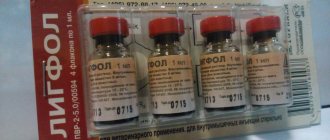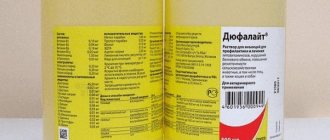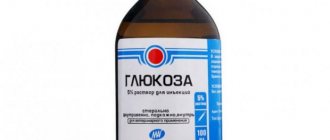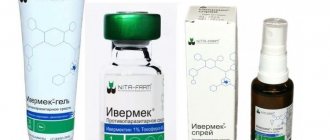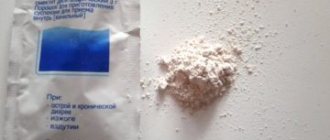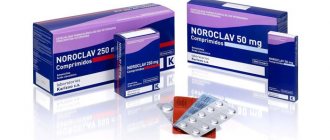Sometimes you need to give your cat an injection yourself without the help of a veterinarian. This happens, for example, when living in a country house or in a village, when it is not possible to travel to a veterinary clinic every day, but treatment is necessary.
Giving an injection to a cat is not at all difficult, you just need to know the difference between an intramuscular injection and a subcutaneous injection and understand the tactics of administration.
How to choose the right syringe
The syringe is also selected depending on the drug - its volume and injection site. For injection into the muscle, instruments with a volume of 1-10 ml are suitable. If the amount of medicine is large enough, for smooth administration you should purchase a syringe with a piston equipped with a special seal. For a small volume of injection solution (up to 1 ml), an insulin syringe with convenient graduation is used.
It is advisable that the needle used to administer the drug intramuscularly is not too long. The femoral and brachial muscles of cats (especially kittens) are small, which increases the risk of damage to the sciatic nerve or bone. An insulin syringe equipped with a thin and short needle will also help out here. An injection into muscle tissue is more painful than under the skin, and a thin, sharp needle will slightly reduce pain.
Subcutaneous injections are tolerated more easily by animals - there are not too many nerve receptors in the withers. Needles can be longer and thicker, and syringes of different sizes, depending on the indications. Typically, the amount of medication injected into the subcutaneous space is greater than into the muscle.
When selecting an instrument for giving injections to a cat, take into account the consistency of the drug. Oil solutions are distinguished by viscosity, ductility and require larger diameter needles.
INJECTION TECHNIQUE
Below is a general diagram, however, depending on the injection site, it will be supplemented with some nuances. You will read about these nuances below: in the part of the article where each injection technique is described (subcutaneous and intramuscular).
STEP #1. Prepare the tools: syringe, medicine, cotton wool (to open the bottle with the medicine), a file to open the medicine and alcohol (hydrogen peroxide). Everything should lie on a flat surface in one place.
STEP #2. Read the instructions for administering the drug. If it is written that it needs to be diluted in a solution or heated, etc., follow all the necessary steps. Or stick to what your veterinarian wrote. (If there are fundamental discrepancies in the veterinarian’s prescription and the instructions, it is better to call the veterinarian and check again whether you understood everything correctly.)
STEP #3. Disinfect your hands with alcohol, hydrogen peroxide, or another product.
STEP #4. Open the bottle using cotton wool, breaking off the top. Some bottles require filing with a special file: if this is the case, the file will be included. Before opening, make sure that the liquid is distributed evenly throughout the bottle. If there are bubbles or some liquid has gotten into the spout that you are about to break off, tap it with your fingers to move air to the top before opening it.
STEP #5. Draw the medicine into the syringe. You can draw by tilting the syringe and bottle almost horizontally or by turning the bottle upside down.
STEP #6. After you have drawn the liquid into the syringe, expel any trapped air. To do this, hold the syringe vertically with the needle pointing up and tap it with your fingernail. After this, when the air rises to the outlet, release it using the piston, holding the syringe with the needle up. Release air until liquid begins to come out of the needle. Perhaps after this, at the very exit of the syringe you will see a small, small bubble that does not come out: do not pay attention to it, it is not dangerous.
STEP #7. Place the cat on a flat, hard surface and have your partner steady it.
STEP #8. Now you can give the injection. If it is in the thigh, you don’t need to pinch the skin at the injection site. If the injection is at the withers, the skin must be grasped with your left hand (for left-handers - with your right). Take the syringe in your right hand (for left-handed people - in your left hand). Once you've aimed, gently but firmly insert the needle. The movement should be precise, accurate, fast, but not rude. The injection is not deep: 1 cm for an intramuscular injection and 0.5 cm for a subcutaneous injection.
STEP #9. Having inserted the needle, press evenly on the piston. Do not turn the needle inside the cat under any circumstances. The more medicine and the more painful it is, the slower it should be administered. However, the pet will not allow you to do this for too long. Therefore, a balance will have to be found. The main thing is not to inject so quickly that a lump of medicine forms under the skin: then it will be distributed throughout the body longer and cause more pain at the injection site. You can first practice on the pillow with a dry syringe, which you then throw away and take a new one for the cat.
Step #10. After injecting the drug completely, pull out the syringe along the same trajectory as you injected. The injection site does not require special treatment, because Cats have a protective layer on their skin that will prevent infection from penetrating inside. The main thing is that your hands and instruments are sterile.
Choosing a syringe for injection
Instruments for pets are purchased at a regular pharmacy for people. There are three types of injections: intramuscular, subcutaneous, intravenous. Each option requires different syringes and needles.
For intramuscular
In this case, the injection is carried out into the muscle of the cat's back or front leg. Syringe volumes are allowed: 1, 2, 5, 10 ml. If you need to administer a dose of more than 1 ml, you need to choose three-component syringes. In addition to the needle and piston, the design includes a plunger that allows the needle to move gently. The black seal is located at the end of the piston where the needle is inserted.
After choosing the correct volume, you should decide on the needle. For a cat and especially a kitten, it is better to choose thin needles. When choosing a syringe with a capacity of 2.5 ml or more, take a 30x0.6 mm needle or from an “insulin syringe”.
“Insulin syringes” work well with doses less than 1 ml. They got their name from the frequent administration of insulin to diabetic patients. The tool has two positive characteristics. First, it has a plunger for gentle movement. Secondly, the needle is short. Beginners should not worry about the depth of the needle.
Important! The needle must be very sharp. If she was getting medicine through the rubber stopper, the needle should be replaced.
For subcutaneous
In this case, the injection is made into the withers of the animal. Since the skin here is soft, not so stretched, it has few nerve endings. The cat feels less and, therefore, tolerates even painful injections well.
The volume of the syringe can be different, but the needle should be chosen 30x0.6 ml. This is the case if the medicine is not oil-based.
Often subcutaneous injections are accompanied by medications with an oily structure. To prevent the drug from clogging the passages in the needle, you need to choose needles of a larger diameter, since the oily and viscous structure of the drug hardens quickly. For example, if the syringe has a volume of 3 ml, then the needle should be selected 40x0.7 mm, etc.
Intravenous injection is carried out only by specialists.
Rules
The main rule mentioned above is cleanliness, compliance with the rules of septic tanks and antiseptics.
Some specifics:
- Only a new syringe is used for the injection.
- The needle is untouchable; it does not need to be wiped, prepared or touched.
A new needle is used for each injection because:
- during the initial puncture of the skin, burrs appear on the needle that you cannot see;
- the used needle is not sterile and even if you wipe the outside of it, it is impossible to disinfect the canal.
The injection should be beneficial, which means it is worth considering the rules for storing drugs. The best solution is a detailed consultation with a doctor, but it is not always possible, and a confused owner is not always able to remember the nuances. An opened drug always has a limited and short shelf life because it is oxidized by oxygen. If you need to make several injections from one ampoule, immediately draw the drug into new syringes. Afterwards, the syringes need to be wrapped in paper and put in the refrigerator.
Risks and bad consequences are most often caused by excitement and inattention. This algorithm will help you avoid common mistakes:
- Inspect the ampoule - it should have the name and expiration date. Do not use ampoules without inscriptions, expiration dates or with worn out letters.
- Instructions, item description of the drug - it says what the solution should look like: color, consistency, presence of sediment, etc. Found any inconsistencies? – do not use this ampoule.
- Instructions, destination – check the information to see if the drug is intended for cats and for intramuscular administration.
- Instructions, method of administration and dosage - some drugs need to be administered at a certain speed or only by heating to the desired temperature. At the same point there will be instructions if the drug needs to be prepared: diluted, shaken, etc.
Use individual syringes for each drug, since mixing them can lead to mutual oxidation.
The next step is to open the ampoule and withdraw the drug into a syringe. Everything is simple here - the main thing is to capture as little air as possible. A few nuances that will help you:
- Small ampoules with a neck diameter of up to 2 mm can be turned upside down and the drug will not leak out.
- From medium and large ampoules, the neck of which is more than 3 mm, it is more convenient to take the drug at an angle of 45° or by placing the ampoule on a vertical surface.
- From containers with a rubber stopper, sampling will be easier and more convenient if you use an additional needle to suck in air.
To open the ampoule, a special blade-stone is used, which is convenient for filing glass. Most modern manufacturers package drugs in ampoules with an indicator element (dot or strip). If there is an indicator on the ampoule, you need to press the top part above it and away from you. Do not apply too much force, as you may damage both the ampoule and your hands.
What to do if air does get into the syringe? Firstly, don’t worry, an air bubble that gets into a muscle is not fatal, and secondly, it can be expelled through a needle. Simply lift the syringe with the needle up, tap the plastic, and when the bubbles rise, apply a little pressure on the plunger.
Preparing for the injection
Before you give your cat an injection, you need to prepare everything you need.
- Determine the location where the procedure will be performed. It should be smooth, not slippery, preferably at the level of a regular table.
- Before taking the medicine, you should make sure that the drug is not expired. It will not be superfluous to re-read the instructions for the medicine, as well as the veterinarian’s prescription for time and dosage.
- The cold preparation must be warmed up to body temperature (it is enough to hold it in your hand for a while).
- To draw the medicine from the ampoule, its upper narrow part is broken, first wrapped with a piece of cotton wool.
- The powder form of the product must be diluted with saline, novocaine or a special solution included in the kit (check with your veterinarian for details on dosage). First, the solution is drawn into the syringe, then it is injected into a vial of powder, the medicine is dissolved with light circular movements (without shaking), and then drawn back into the syringe. After this, it is advisable to change the needle.
- When the medicine is drawn up, you should get rid of air bubbles - lift the syringe with the needle up, lightly tap the cylinder, ensuring that the bubbles accumulate under the medicine outlet, press slightly on the piston until the air comes out and drops of the drug appear.
Unneeded cotton wool, ampoules and other items should be disposed of, and the prepared syringe can be briefly placed on a clean surface (plate, container), covering the needle with a cap.
Preparation
Important! Before administering any medications, be sure to consult your doctor. Use only those medications that are prescribed. Strictly follow the dosage and timing of treatment.
- Read the instructions carefully. Check the expiration date of the medicine and diluent used. Do not use ampoules with erased names. Make sure that the color and consistency of the medicine correspond to the description given in the instructions. Medicines that are prone to separation into their original components must be shaken before administration; this will also be indicated in the instructions for the drug.
- Determine your pet's weight. There are medications that require precise dosage - with a smaller dose you will not get the desired therapeutic effect, and an overestimation of the dose will cause undesirable effects or symptoms of poisoning.
- The choice of syringe depends on the dose, consistency of the drug and method of administration. Most often, 2 ml syringes are used for cats. If you need to administer a dose less than 1 ml, use an insulin syringe.
- Before the procedure, wash your hands with soap.
- There is no need to disinfect the injection site; the skin of cats has excellent protective properties, but the syringe must be sterile. When preparing the solution, do not touch the needle with your hands. If you are not injecting the medicine right away, cover the needle.
- Each injection must be given with a new sterile syringe and sterile needle. Prepare the medication solution immediately before use. Do not mix different drugs in one syringe unless prescribed by a doctor. Fill the syringe with as much medication as needed for one injection.
- Dry medicines cannot be stored after dilution; any leftovers will have to be thrown away.
- Cold medicine should not be administered; the temperature of the solution should approximately correspond to body temperature. This especially applies to oil solutions, which, when heated, pass through the needle better. To warm the ampoule with the solution, simply hold it in your hand for a few minutes.
- If the instructions for the medicine include the option of using novocaine as a solvent, be sure to use this. In this case, the injection will be less painful for the animal and it will tolerate it more calmly. Novocaine, as a solvent, is best used not in its pure form, but with the addition of saline or water for injection; see the instructions for the drug for details.
- After you have drawn the medication into the syringe, turn the needle up and release a small amount of medication to remove any air bubbles from the syringe. If you couldn’t remove them completely, it’s okay, just don’t inject any remaining medicine with bubbles during the injection.
- Set yourself in a calm and decisive mood, don’t worry, the animal shouldn’t feel that you’re nervous. In order not to scare the cat, it is better to give the injection without lengthy preparation, calmly and confidently. You can first practice on inanimate objects, for example on a pillow, what and how you will do
- For the first time, take someone's help. Have a helper hold your cat lightly while you administer the injection. If the cat is calm, in the future you will be able to do everything yourself.
Possible difficulties
For a non-specialist, giving an intramuscular injection can be difficult, especially for the first time. It must be remembered that anxiety is transmitted to the pet, so it is very important to remain calm. The injection is necessary in order to help the animal, so there is absolutely no need to feel guilty.
If after an intramuscular injection blood appears on the surface of the skin or fur, this is considered normal. But if the bleeding does not stop, then you need to apply something cool to the manipulation site for 15-20 minutes. It is important not to overdo it and not to overcool the injection site.
Lameness may persist for some time from the injection of painful drugs, but if the limb hangs lifelessly and has lost mobility, this is a reason to seek advice from a specialist.
Special problem cases
It is advisable to examine several specific problems in more detail.
When the kitten resists
Cats are very sensitive to a person’s mood, so nervousness and anxiety are transmitted to them instantly. So the first piece of advice is to deal with the animal’s resistance calmly, without aggression or irritation. A small kitten will not bite you much, but if the animal is large (Maine Coon breed), then you can wrap it in a towel.
The cat is afraid of an injection
For the same reasons, you should not worry or worry if the cat shows anxiety before the injection. Perhaps your mistake is that after the injection you do not give the kitten a treat, do not pamper it, or you yell at it so that it does not move.
However, the kitten’s increased anxiety may not be related to your actions, but may be the result of the animal’s mental properties.
Blood appears after injection
It is normal if a couple of drops of blood remain on the skin after the injection. It can be wiped with cotton wool; there is no need to disinfect the stake site. But if there is heavy bleeding, you need to consult a doctor, since the kitten’s blood does not clot. You must first apply ice to the injection site.
Soreness and lameness
Soreness at the injection site is normal and occurs frequently. However, it goes away quite quickly. So if after a couple of hours the animal is still limping or crying, then you need to massage the paw and apply ice to the injection site. The pain goes away on its own in most cases, but if discomfort continues, you should consult a doctor. Perhaps a bone, a large vessel was touched, or an allergic reaction began.
How to give an injection in the thigh
An intramuscular injection into a cat is given into the thickness of the femoral or brachial muscle. Before making an injection, it is necessary to palpate the muscle, determine the injection site, and make sure that the animal is calm and the muscle tissue is relaxed. For relaxation, you can pre-massage the limb.
The angle of insertion of the needle into the thigh should be approximately 90˚, the penetration depth should be no more than a centimeter. It is necessary to ensure that the needle does not completely enter the muscle - there should be a gap between the surface of the body and the plastic.
As soon as the needle is in the muscle tissue, you need to calmly press the plunger and slowly inject the medicine. You cannot move, turn, or deepen the syringe while giving an injection. Remove it in the opposite direction, with a quick movement.
Where to give an injection to a cat
Despite the fact that, in theory, you can hit it almost anywhere, there are places on the animal’s body where it will be more effective and less painful. The cat can be injected subcutaneously into the withers (between the shoulder blades) or intramuscularly into the thigh. The muscle tissue of the thigh has a large number of vessels, so any injected medicine is very quickly delivered to the blood. An injection is given into the thigh if the drug is not very painful. In some cases, intramuscular administration is preferable, so you should carefully read the instructions. Intramuscular injections are limited in volume - liquid injected inside causes greater muscle separation, which is a microtrauma.
The skin on the withers is denser, so it is better to address “painful” solutions to this particular place - just remember how animals fight and grab each other precisely by it.
How to give a subcutaneous injection
It is easier to inject a cat under the skin than in the thigh. Firstly, the withers are considered less sensitive to mechanical influences (it’s not for nothing that cats drag their cubs by the withers), so this place is ideal for administering painful solutions. Secondly, much larger volumes of medicinal solutions (up to 70-90 ml) can be injected subcutaneously than into the femoral part. Thirdly, there is no risk of the needle getting into a bone, joint or nerve, as happens with intramuscular injection. The only point that needs to be paid special attention to is that the skin here is thicker than the thigh, so you need to apply force to pierce it.
The injection technique under the skin is as follows:
- With one hand, the skin in the withers area needs to be gathered into a fold;
- with the other hand, under the skin pulled upward closer to the body, with some effort, insert the needle at an angle of 45˚ relative to the surface of the body;
- administer a medicinal product;
- remove the syringe;
- release the skin.
It is advisable that someone from the side during the procedure slightly press down the head and back of the pet’s spine.
Important! If you have no experience in administering medication subcutaneously to your cat, there is a risk of piercing the skin through. This probability is due precisely to the thickness of the skin and its resistance during piercing with a needle. Therefore, during the injection process, you need to pay attention to the opposite side of the fold - if droplets appear on it, you need to pull the needle a little towards yourself, and then continue the procedure.
Intramuscular injection
The medicine is administered intramuscularly so that it gives its positive effect as quickly as possible. This happens thanks to a dense capillary network. It is even easier to inject into a muscle than under the skin. The injection is carried out into the largest muscles of the body, for kittens this is the femoral and brachial posterior muscles.
But in small kittens there is a danger of damaging the bone with a needle simply by piercing the muscle through. Therefore, the needle is inserted shallowly - only 5 millimeters , which will be enough for a small kitten. If you have doubts, you can feel the kitten’s thigh yourself and find the muscles and bones; insert the needle so that it is in the center of the muscle.
There are no exact recommendations on technology for intramuscular injections. Calm animals can be done without any methodology at all. It is advisable to put the kitten on its side, press its head and hold its paws; it is more convenient to perform the procedure together. Overly active or nervous kittens can be wrapped in a towel, with only the necessary part exposed.
The needle must be inserted at an angle to the thigh , parallel to the ground (that is, not from top to bottom, but from behind). The kitten can be released only after removing the needle, otherwise it will break free and injure its paw with the syringe even more. After the procedure, you can lightly massage the injected area so that the drug dissolves faster. Also give your kitten a treat to cheer him up.
If the kitten's paw is tense, the pain from the injection will become greater. To prevent this from happening, you need to relax your paw. To do this, you can bend it slightly and at the same time scratch the kitten’s back.
Speed and volume of drug administration
A small amount of the drug can be administered intramuscularly. A small kitten can only be injected with 0.1-0.2 milliliters of solution into one leg. However, it can be administered into several paws, thus increasing the volume of the drug. The rate of administration is one milliliter in 3-4 seconds. The larger the volume of the product, the slower it needs to be administered.
Administration technique
The speed of drug administration plays a role with intramuscular injection. The more medicine, the slower it must be administered. For example, a volume of 1 ml should be stretched over 2-3 seconds, and 0.5 ml should be injected in one second.
Injections separate the muscles and thereby cause microtrauma to the body. Therefore, a certain calculation is used to administer the required amount of medicine for cats of different weights. For an average cat weighing 4 kg, one place should contain 1 ml of the drug. If you need to inject a larger amount, then you need to inject in several places.
With a subcutaneous injection, the speed of drug administration is not significant. The amount of liquid per 1 kg is limited to 70 ml.
Intramuscular injection
In order for the medicine to work quickly, an intramuscular injection is usually given. The best place for injection is considered to be the middle of the thigh.
Algorithm of actions
Preparation:
- The procedure will be quick and successful if you carry out the preparatory work. We put cotton wool, a syringe, medicine, a file, and alcohol on the table in advance.
- Read the instructions carefully. Let's say you notice a discrepancy with your veterinarian's prescription. Call your doctor and find out before you get the injection.
- Wash your hands with soap and wipe with alcohol.
- Before filing the ampoule, make sure the medicine is at the bottom. If the medicine gets into the narrow part of the bottle, tap the sides with your finger and distribute it correctly.
- Point the needle into the cut neck and turn the ampoule over. This will make it more convenient to collect liquid.
- Once the solution is drawn into the syringe, turn the syringe upside down with the needle so that the air droplets rise up. Press the plunger until the needle is filled with medicine and the air is expelled.
- Don't worry before the procedure, otherwise your cat will sense it and become agitated and tense. You need to calm the cat with caressing movements to relax the muscles.
- There is no need to lubricate the injection site with anything, as this can only damage the antibacterial layer of the skin.
Injection:
- If you have a partner, let him put the cat on its side and hold it by the paws. For independent actions, you can use a bag with a fixative for injections. Also use a large clothespin. Fasten it behind the withers. The cat will think that someone is holding it and will sit quietly. The owner has the opportunity to work with both hands.
- Use your fingers to feel the bone in advance so as not to hit it with a needle.
- There is no need to pinch the injection site in the muscle.
- Some medications should not enter the blood vessels. Therefore, during the injection, pull back the plunger and make sure that no blood enters the syringe and calmly inject the solution. If there is blood, remove the needle and make a new puncture.
- Insert the needle into the middle of the thigh 10 mm at an angle of 45 degrees.
- The rate of administration depends on the amount of solution. Each ml of medicine must be administered for at least 2-3 seconds, each subsequent ml is administered more slowly.
- After injecting the liquid, pull out the needle at the same angle that was inserted before. There is no need to wipe the injection site.
Algorithm of actions
Before performing an injection, you need to familiarize yourself with a number of rules for selecting a syringe, preparing for the procedure, correct administration tactics and possible complications.
Syringe selection
The effectiveness of drug administration depends on the correct selection of the syringe. Not only the volume of the product affects, but also its composition.
The most commonly used syringes are 1, 2, 5 and 10 ml. Pharmacies offer a wide range of products; they come in domestic and foreign production.
If the administration of less than 1 ml of the product is prescribed, you can use an insulin syringe designed for just this volume. In addition, it has a thin and short needle, which is convenient for beginners, because you don’t have to worry about inserting it too deeply. But it is not intended for oil injections, since they clog the small lumen of the needle due to their increased viscosity.
For such solutions, it is worth using a needle with a large diameter, taken from another syringe, then the injected product will pass through easily.
The sterile original packaging should only be opened immediately before injection.
Preparing for the injection
For any intramuscular or subcutaneous injection, strict adherence to the rules of asepsis and antisepsis is necessary:
- The ampoule is opened using a special cutter.
- Open the package with the syringe and attach the needle if it was not installed at the factory for the production of medical materials.
- Remove the protective cap from the needle without touching it.
- Then place it in an ampoule and take out the required amount of medicine.
- Point the syringe upward with the needle and remove excess air by pressing on the piston.
The syringe is now ready for use.
Rules for manipulation
All medications are administered in 3 ways: subcutaneously, intramuscularly and intravenously (stream or drip). The latter are carried out only in veterinary institutions by specialists; they are not done independently. This is a fairly serious procedure, which, if done incorrectly, can lead to a wide range of complications and even the death of your pet.
The owner of the animal can only receive the first 2 types of injections.
The tactics for these types of injections are different.
Intramuscular injection
The place where it is most often performed is the thigh. First you need to feel it: feel the thickness of the muscles under your hands and find out the location of the bones and joints in order to prevent getting into them, otherwise this can lead to the development of a number of complications.
Before performing the procedure and administering the product, the assistant must securely secure the animal so that it does not escape during the procedure. Then insert a needle into the selected area of the thigh to a depth of 1.5-2 cm and inject the medicine. You can inject the drug intramuscularly into the shoulder area, but the muscle layer there is less developed and injections there can only be done with experience.
Subcutaneous injection
The optimal injection site is the cat's withers. This part of the animal’s body is convenient in that it is evolutionarily designed for the mother to carry kittens and capture during mating, and therefore there are few nerve endings there and a skin fold is easily formed.
You can perform a subcutaneous injection without an assistant. To do this, press the cat to your knees or to the table, grab the skin on the withers between the shoulder blades with your left hand and pull it back, forming a fold. The needle is inserted at an angle of 45 degrees to the spine, piercing the skin with force, since it is thick and dense in this place. Then medicine or vitamin preparations are injected.
Rate of drug administration
It depends not only on the volume of the product injected, but also on its consistency. Aqueous solutions are injected at an approximate rate of 1 ml per 1 second, and oily or viscous solutions - the same volume in 5-6 seconds.
Volumes of injection
For subcutaneous injections, it is allowed to administer a larger volume in one place, but not more than 90 ml per 1 kg of pet’s weight. To do this, use standard syringes, for example, 10 ml, but draw several of them at once and, without removing the needle, simply change the empty one to the filled one, carefully disconnecting it and attaching it to the cannula. In large dosages, glucose and saline are most often prescribed.
Painful injection and possible lameness after it
Even after a correct intramuscular injection into the thigh, the animal may develop lameness and fighting sensations; the pet may press its paw when walking and try to step on it less. This is due to the effect of the drug, its distribution in the tissues, and may also be caused by damage caused by the needle.
Such phenomena should go away on their own within 15-30 minutes and do not require treatment. During this time, the drug will be distributed in the muscles and the unpleasant phenomena will disappear.
If the lameness persists or the cat presses its paw and tries not to step on it (for more than 24 hours), it is worth showing it to a specialist to conduct an examination and find out the reasons for this condition.
What complications may there be?
The introduction of medicinal solutions, regardless of the location, injures the surrounding tissues. Complications can arise not only when the procedure is carried out ineptly, but also from an experienced specialist. The most common negative consequences of injections are:
- hematomas – formed due to damage to a blood vessel by a needle and penetration of blood into neighboring tissues; they do not require special treatment and go away on their own;
- blood protruding after removing the needle - just as in the previous case, serves as a sign of damage to the blood vessel; to stop the bleeding, it is enough to apply cold to the wound;
- bump, compaction, swelling at the injection site - can have several reasons, for example: too rapid administration of the medicine, infection entering the wound, individual tissue reaction, and others; if the bump does not go away for a long time, and the cat’s well-being worsens, you need to show your pet to a specialist;
- lameness - can be a consequence of the injection itself, as damage to soft tissues, for example, with severe pain from the solution, or as a result of the needle getting into the sciatic nerve; in the latter case (if the damage persists for longer than 2-3 days and the paw remains motionless), you need to visit a veterinarian;
- deviations in behavior are a normal reaction of an animal that goes away on its own over time; the cat may panic, avoid touching, flinch, and so on;
- an increase in body temperature - more often occurs as a reaction to the injected solution, a manifestation of an allergy, and also if sterility was not maintained during the procedure and an infection got into the wound.
Additional symptoms that you need to pay attention to and consult a doctor: pus from the skin puncture site, painful lumps, refusal to eat, loss of activity, apathy for more than 3 days after the injection.
Possible consequences
Sometimes the procedure does not go without consequences. Therefore, you need to be prepared for them in order to make the cat’s fate easier. Let's look at the most common ones.
Blood at the injection site
Sometimes after an injection you notice a drop of blood. A blood vessel may be damaged. If there is little blood, then you need to take ice, wrap it in a towel and apply it to the wound. After 10-20 minutes everything will pass. If the wound bleeds after applying cold, contact your veterinarian immediately.
Formation of lumps and swellings
Post-injection abscesses are the result of an unsuccessful injection. A bacterial infection enters the wound. The second reason is hypothermia of the pet in the injection area. Consequences: increased temperature, fever, restlessness. The cat develops painful, purulent capsules that are removed by surgery.
Usually, swelling and bumps after injections do not affect the pet’s health. Over time, they will resolve on their own without the intervention of a veterinarian.
Lameness
Lameness of the hind limb often appears after injections. According to veterinarians, there is no need to worry about this. The lameness will go away in a few days.
But if a cat drags its leg for several weeks, you need to contact professional veterinarians to prevent the disease at an early stage. Doctors will carry out a series of novocaine blockades.
Changing your cat's behavior
The pet changes a lot after the injections: nervous, does not allow itself to be petted. Experts explain this as a psychological attack. Cats are afraid of people in white coats and injections. To bring it to its original state, you need to give your pet time. Over time, he will forget everything and will be active and affectionate as before. You can speed up the process with your favorite food; pamper your cat with goodies, and she will respond to your care immediately.
Temperature increase
When the temperature has increased as a result of vaccination, the reaction is considered normal. After 2-3 days all symptoms will disappear. If the temperature continues to persist after 3 days, you should contact your veterinarian. Complications associated with allergies and paralysis may appear here. Based on the identified complications, treatment is prescribed.
A rarer case of fever is associated with an abscess after injections. You should contact your veterinarian to remove the purulent lump.
It is more economical to treat pets at home. But before you make a choice, you should think about whether you are ready to be fully responsible for your actions. Sometimes the right decision may be to trust the professionals. Share with us and readers in the comments practical tips on how you inject your cat.
When a veterinarian prescribes a course of injections for pets, not all owners have the opportunity to bring the animal to the clinic. Also, not every owner has a neighbor or acquaintance (relative) with experience in giving injections. In addition, there are times when a pet urgently needs an injection, but there is no way to contact anyone (at the dacha or on a trip). Therefore, every owner needs to have an idea of how to give an injection to a cat.
Subcutaneous injections
How to give a subcutaneous injection to a cat? This method is considered more convenient and less painful. The presence of a large fat layer allows medications to be absorbed well and quickly.
Injections are placed in the knee crease or withers. Using three fingers, lightly stretch the skin between the shoulder blades.
We insert a needle into the base of the resulting pyramid along the spine to a depth of no more than one and a half centimeters.
Carefully remove the needle and lightly massage the injection site to improve the absorption of the solution and prevent the formation of infiltrate.
Why does a cat sneeze - diagnosis of the cause, treatment at home and tips for caring for cats with a cold (video + 110 photos)A cat without water - how long can it live, features and possible consequences of dehydration (125 photos)
How to determine the gender of a kitten - learn to distinguish kittens yourself. Advice from breeders and veterinarians on how to distinguish the sex of kittens (120 photos and videos)
There are also intravenous injections. But setting them up at home is undesirable. The technique for performing this procedure is very complex and therefore should only be performed by professionals.
Useful tips
To inject your cat yourself and avoid complications, you need to adhere to the following recommendations:
- for injections, you should use only a sterile syringe, which must be disposed of after the procedure;
- the needle must not be touched with hands, otherwise it must be replaced;
- Before carrying out the procedure, it is better to fix the pet in a motionless state, leaving only the injection site of the syringe open (you can use a harness, blanket, sheet and other accessories) or invite someone from the side to hold the cat;
- as a rule, injections are made into an intact area of the skin, so if the animal has any skin disease, you must first clarify this issue with a veterinarian;
- there is no need to disinfect the injection site of the syringe, but the owner must first wash his hands with soap and treat them with an antiseptic;
- if the doctor has prescribed injections every day or several a day, it is best to give injections to the paw alternately - right and left or front and back, in order to avoid severe trauma to the cat’s tissues and allow them to heal;
- oil-based medicine should not be allowed to enter the bloodstream; You can make sure that the needle has not entered a blood vessel by slightly pulling the plunger towards you after inserting the syringe - the absence of blood in the solution indicates that the vessels are not affected, and you can continue the procedure;
- You cannot administer more than one drug at the same time in one syringe, unless authorized by a specialist.
To support a mustachioed pet during the procedure, as well as before and after it, you need to talk to it as gently as possible, stroke it, and calm it down. At the end of the manipulations, you should give the cat something tasty.
Every owner can give a cat an injection on their own, the main thing is desire. It’s good if the skill isn’t useful, but mastering it won’t hurt at all.
Basic Rules
Before giving a kitten an injection intramuscularly or subcutaneously, you need to familiarize yourself with the general rules for administering drugs.
- It is best to use an insulin syringe . Its needle is so thin that it is measured in tenths of a millimeter. It only holds a milliliter of solution, but this should be enough for a small kitten.
- Ampoules are printed immediately before administration. The remaining substance in the ampoule is not stored, but can be used immediately after injection on another animal.
- If the solution is stored in the refrigerator , then before administration it must be warmed up to 36-37oC. To do this, it is enough to hold the ampoule in your hand for 5-7 minutes.
- The injection site does not need to be treated ; animals have strong skin protection from damage. But the needle and syringe themselves must be sterile.
- Not only the needle is disposable, but also the syringe itself. They cannot be reused. After use they are disposed of.
- If you are administering several drugs, you cannot mix them in a syringe . In this case, each remedy must be injected into a new place.
- After taking the drug, be sure to release the air not only from the syringe, but also from the needle. To do this, pour a few drops of the product.
- You can't yell at your pet to keep it from moving. It’s better to hold it tightly; especially feisty kittens can be wrapped in a towel, so they will have fewer opportunities to scratch or bite.
- Don't show concern , cats are very sensitive to people's moods, so act confidently. You should not overly “calm” the kitten, as this will only scare it more.
- After the injection, give the kitten treats . This way you will create a positive reflex to the injection itself; as a result, after several injections the pet will resist less. It is important to maintain the ritual constantly; pamper the kitten with a treat after each injection.
Where to give a cat an injection for cats
Well, you don’t want a kitten at all, and it’s not easy to survive the cat’s heat period? In this case, the issue is resolved by sterilizing the animal. But for some reason, some owners believe that there is nothing easier than suppressing the reproductive instinct, forgetting that the consequences of such a decision can be very dire.
If you definitely want to experiment with your cat and give her a cat injection, then you will still have to visit the veterinarian - this should be the moment before the start of estrus, and not during it. The doctor will administer the medicine himself, and then, after 3 months, the next injection will be given according to the schedule. The third ampoule is administered after 4 months, and all subsequent ones every 5 months.
Why shouldn't you give injections yourself ? This is a big risk even without an inexperienced person, so the entire process must be supervised by a doctor.

